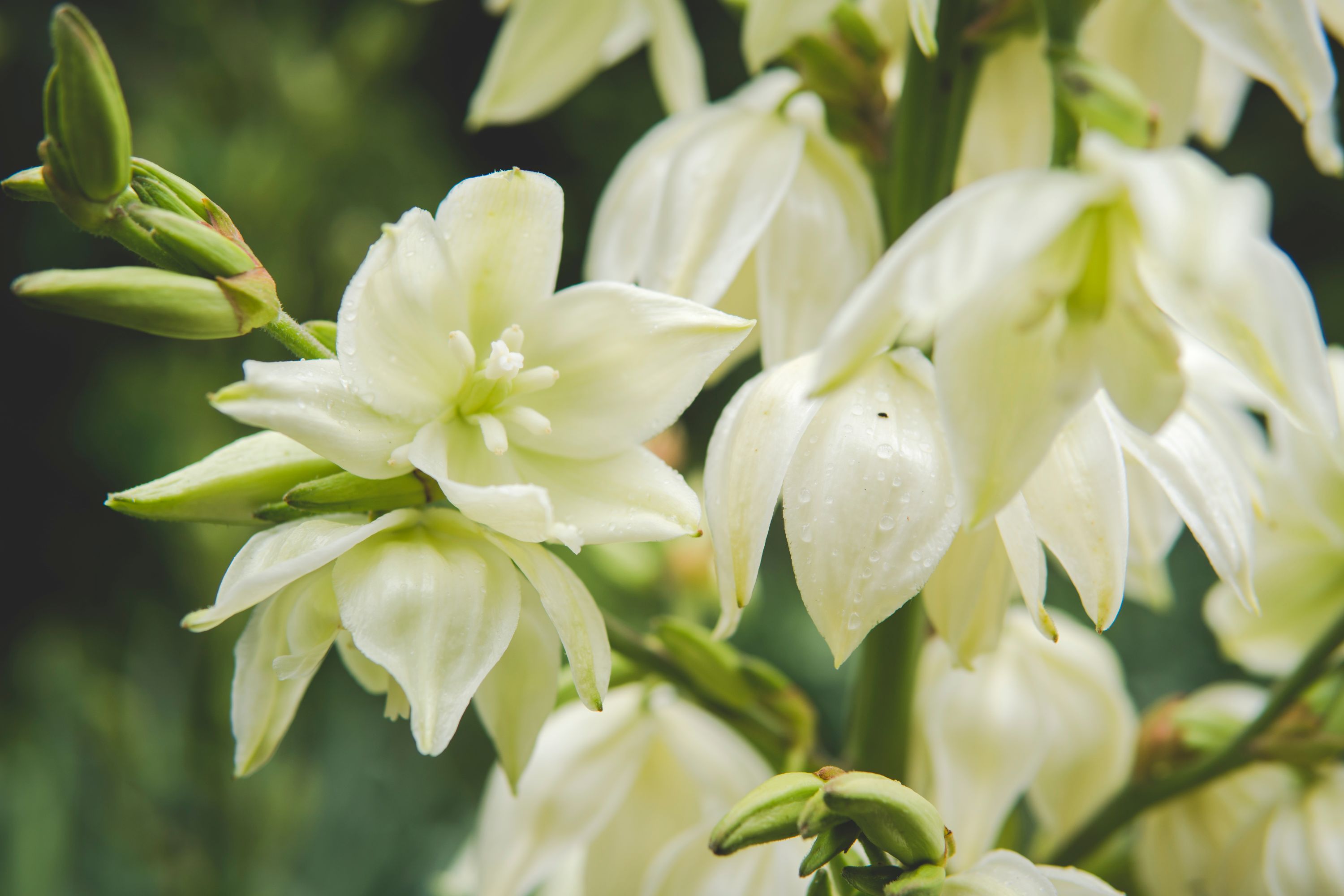Adam's needle
(Yucca filamentosa)

Description
Yucca filamentosa, commonly known as Adam's needle, is a species of evergreen succulent plant native to the southeastern United States. It belongs to the family Asparagaceae, which includes over 40 different species of Yucca. Yucca filamentosa is a popular ornamental plant due to its striking appearance, hardiness, and versatility in landscaping. Appearance Yucca filamentosa is a slow-growing, clump-forming perennial that typically reaches a height of 3 to 4 feet and a spread of 2 to 3 feet. The plant produces a rosette of stiff, sword-shaped leaves that are 1 to 2 feet long and about 2 inches wide. The leaves are gray-green in color and have sharp, pointed tips. They are also covered in curly, hair-like threads, which gives the plant its common name of "filamentosa." In late spring or early summer, Yucca filamentosa produces tall, branched spikes of white flowers that are about 2 to 3 feet long. The flowers are bell-shaped and about 2 inches wide. They are also sweetly scented and attract pollinators like bees and butterflies. Hardiness Yucca filamentosa is a hardy plant that is well-suited to a wide range of growing conditions. It is drought-tolerant and can survive in dry, sandy soils, making it an ideal plant for xeriscaping. The plant is also tolerant of heat and cold, and can withstand temperatures as low as -20°F. This makes it a popular choice for gardeners in colder regions. Propagation Yucca filamentosa can be propagated by seed, stem cuttings, or division of the plant's offsets. Seeds can be sown in the fall or spring, but they can take several years to germinate. Stem cuttings can be taken in the spring or summer and rooted in a well-draining soil mix. Division of the plant's offsets can be done in the spring or fall, and is the quickest and easiest method of propagation. Uses Yucca filamentosa is a versatile plant that can be used in a variety of landscaping situations. It is commonly used as an accent plant, focal point, or in a mass planting. The plant's stiff, spiky leaves provide a striking contrast to softer, more rounded plants, and its tall flower spikes add vertical interest to garden beds. Yucca filamentosa is also popular as a container plant. Its slow growth rate and small size make it well-suited to growing in pots, and its hardiness means it can be grown indoors or outdoors depending on the climate. In addition to its ornamental uses, Yucca filamentosa has also been used for medicinal purposes by Native American tribes. The plant's roots were used to make a tea that was believed to have a variety of health benefits, including treating arthritis, skin conditions, and digestive issues. Cultivars There are several cultivars of Yucca filamentosa that have been developed for their unique characteristics. Some popular cultivars include: 'Color Guard': This cultivar has variegated leaves with yellow margins. 'Bright Edge': This cultivar has yellow margins on its leaves that are brighter than those of 'Color Guard.' 'Golden Sword': This cultivar has solid yellow leaves that are broader than those of the species. Conclusion Yucca filamentosa is a versatile and hardy succulent plant that is well-suited to a wide range of growing conditions. Its striking appearance and ease of care make it a popular choice for gardeners and landscapers alike.
Taxonomic tree:







